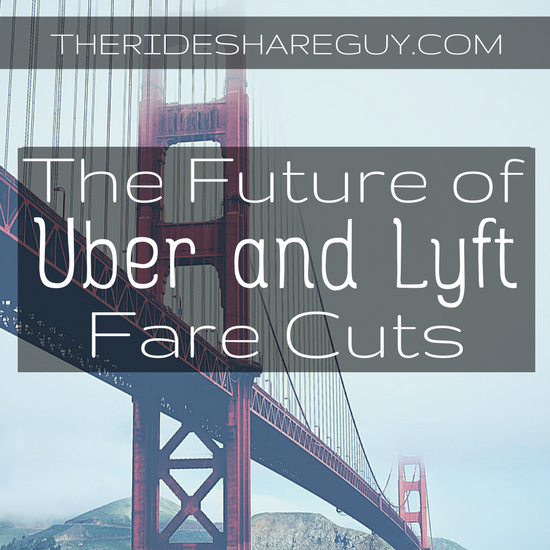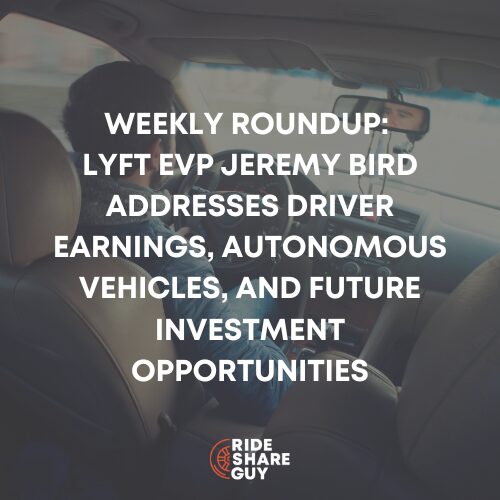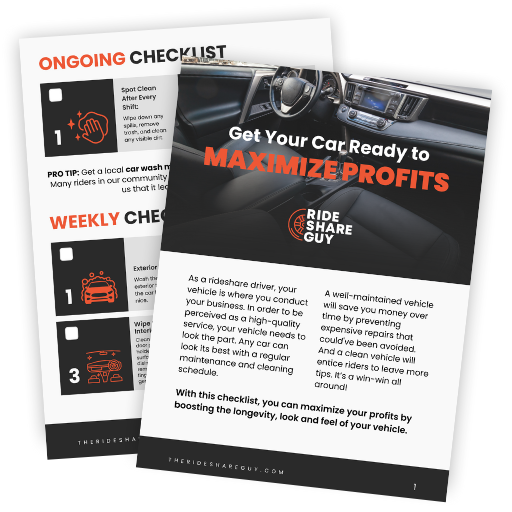Harry here. We haven’t seen any fare cuts from Uber this year, but over the past few months, we’ve been noticing an alarming trend. Today, senior RSG contributor Christian Perea takes a look at the future of price cuts.
2017 marks the first year Uber has not cut rates for drivers as part of their “Winter Warm-Up” guarantee. Uber has slashed driver pay each January for the last three years though, claiming the lower prices will keep drivers busy when it gets slow. Lyft then does the same thing, and then both companies mostly forget to reinstate higher prices after winter is over.
This year, drivers are happy we haven’t seen any real price cuts, but the way drivers now get paid has also changed over the past year. This means it’s possible we’ve already seen fare cuts and don’t even realize it yet.
Future Price Cuts: No Longer Announced
Over the last year, Uber has been offering a lot of incentives to drivers to do things that Uber likes. For example, driving in a certain area for Earnings Boost to basically geo-target their driver supply. Or offering a large $500 incentive to complete 120 trips, which makes drivers seek short rides and UberPOOL to tout their ride count.
These subsidies have been specifically designed to keep drivers on the road, and the bonuses have increasingly begun to account for a larger part of a driver’s pay. Many drivers in big cities now rely on them.
There Are Now Two Parts To Driver Pay
You can really separate driver pay into two categories: Per Mile/Minute pay and Incentive Pay.
Per Mile/Minute Pay: This is the standard pay per mile/minute that drivers receive from each ride. It includes a minimum fare, and if you are lucky a base fare. It’s the model we all know and love as drivers that has traditionally determined how we get paid. It is also where Uber/Lyft would announce price cuts in the past.
Incentive Pay: This is all of the Earnings Boost, Power Driver Bonuses, trip incentives, etc from either Uber or Lyft. Think of it as any money you receive OUTSIDE of the per mile/minute rate I talked about above. It’s usually awarded for completing a goal set by whoever you drive for.
The incentive pay is actually a market subsidy to prop up the supply of drivers. The old style of per mile/minute pay has dropped so low that Uber and Lyft actually have a difficult time getting people to drive consistently, leading to a shortage of driver supply.
Incentive Pay Controls Driver Actions
Incentive pay keeps drivers on the road, but it also keeps us in certain zones or on the road during specific periods of time. And it’s actually a smart strategy since it allows Uber to direct a massive army of contractor-pirates more effectively without paying them like employees.
Would you really want to do a bunch of short trips if you weren’t going to get a big “payoff” for completing 120 trips a week?
2017 Uber Driver Incentive Cuts
As winter approaches, the bonus pay has noticeably gone down and the bonus schemes have changed. Uber doesn’t publish one big record of all the incentives they offer, but several drivers have already reported a drop.
Lower Trip Incentives: Harder to Obtain
RSG reader Marty was kind enough to send us a spreadsheet of his trip Incentive history. His history clearly shows trip incentives being reduced over the last few months in the Bay Area. And I personally (also in the Bay Area) have had my Uber trip incentive offers cut from $500/wk for 120 rides to $410/wk for 120 rides.
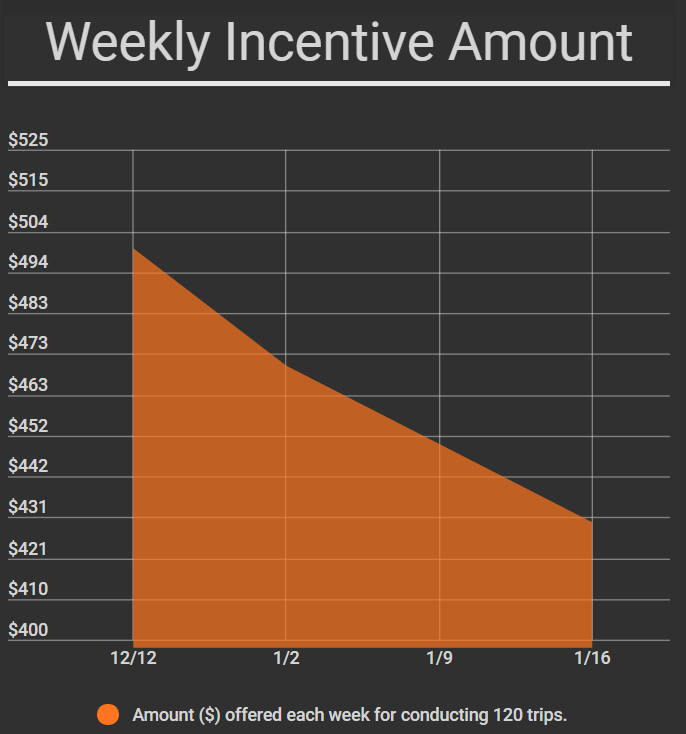
You can view Marty’s spreadsheet here.
From his spreadsheet, we can see that we are already starting to get paid less in 2017. Marty saw his weekly incentive drop from $500 to $450 to $430 over the course of a month.
And those lowered incentives are actually harder to obtain because drivers now have to do 60 trips Monday to Thursday and then ANOTHER 60 trips Friday to Sunday in order to get the full $400+. In the past you could front load or back load all of your trips and at least take a day or two off. But now, if you are a full-time driver, you basically have to drive 7 days a week to get this incentive. This is an example of how Uber is constantly tweaking the terms of these incentives to make them more difficult to achieve.
Earnings Boost is Also Lower
One of our frequent readers and commentators explained the situation in Los Angeles around promotions being walked back, and how that is noticeably affecting driver pay:
Uber is already reducing what they pay us. First it was the removal of the precious metal levels…. I looked at some of what I was getting in May and June. It was 1.8x for the morning in all parts of LA Core. About 1.6x in the afternoon and then up to 2.0x into the evening. Now, they’ve cut the Core area into 5 sections and the incentives vary from one area to another.
– VHound
Different Boosts For Different Drivers
The images below come from two different drivers logged on at the same day at the exact same time in the same area. But notice that each driver has a different level of Earnings Boost in each zone. Now we have confirmation that different drivers most definitely are getting different incentives, but how are these incentives decided and who decides which drivers get the best incentives?
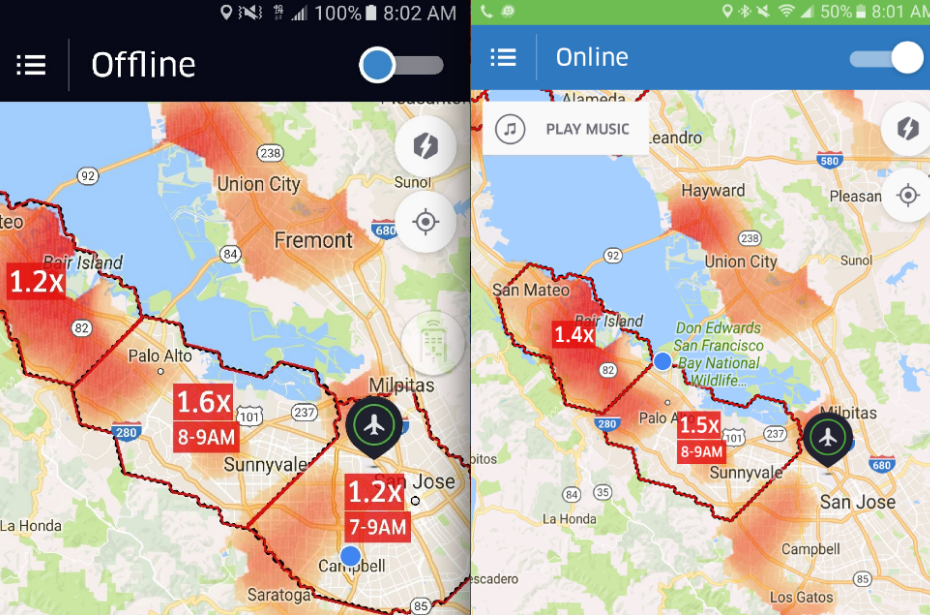
“Upfront” Pricing Plays An Important Role In This
Upfront pricing has completely separated what a passenger pays from what a driver receives as pay. It allows Uber or Lyft to charge the passenger whatever they want and only pay the driver based off of the per-mile/minutes driven. This separation is important because it opens the door to raising prices in the future for passengers without raising the pay for drivers. Thus allowing the company to capture higher proportions of the fares.
Both Uber and Lyft tell us that we get paid the same, and that the passenger is quoted a price based off an “estimated route”. However, we’ve already shown in a previous article that Uber has a tendency to overcharge the passenger by assuming a longer (more expensive) route than what would otherwise be taken.
Related Article: Uber’s Upfront Pricing Is Secretly Overcharging Passengers Without Paying Drivers
Lyft Shoots First in 2017: We May Still Get Price-Cuts From Uber
Last Friday and Monday, Lyft announced price adjustments to a bunch of markets. Some markets seemed to get tiny cuts while some got tiny bumps in pay. The major takeaway from most of these price adjustments is that they don’t really make a big difference, and they are more or less to exactly match Uber’s pricing. (Except for some cities like Orange County, which saw a cut from $1.05/mile to $0.90/mile.)
Lyft has followed in Uber’s fare-cutting footsteps in the past, but being the cheapest option is important to Uber. The ball is now in their court. In the past this has been followed by steep cuts in prices to passengers from Uber. Wanna place a bet on how they will respond?
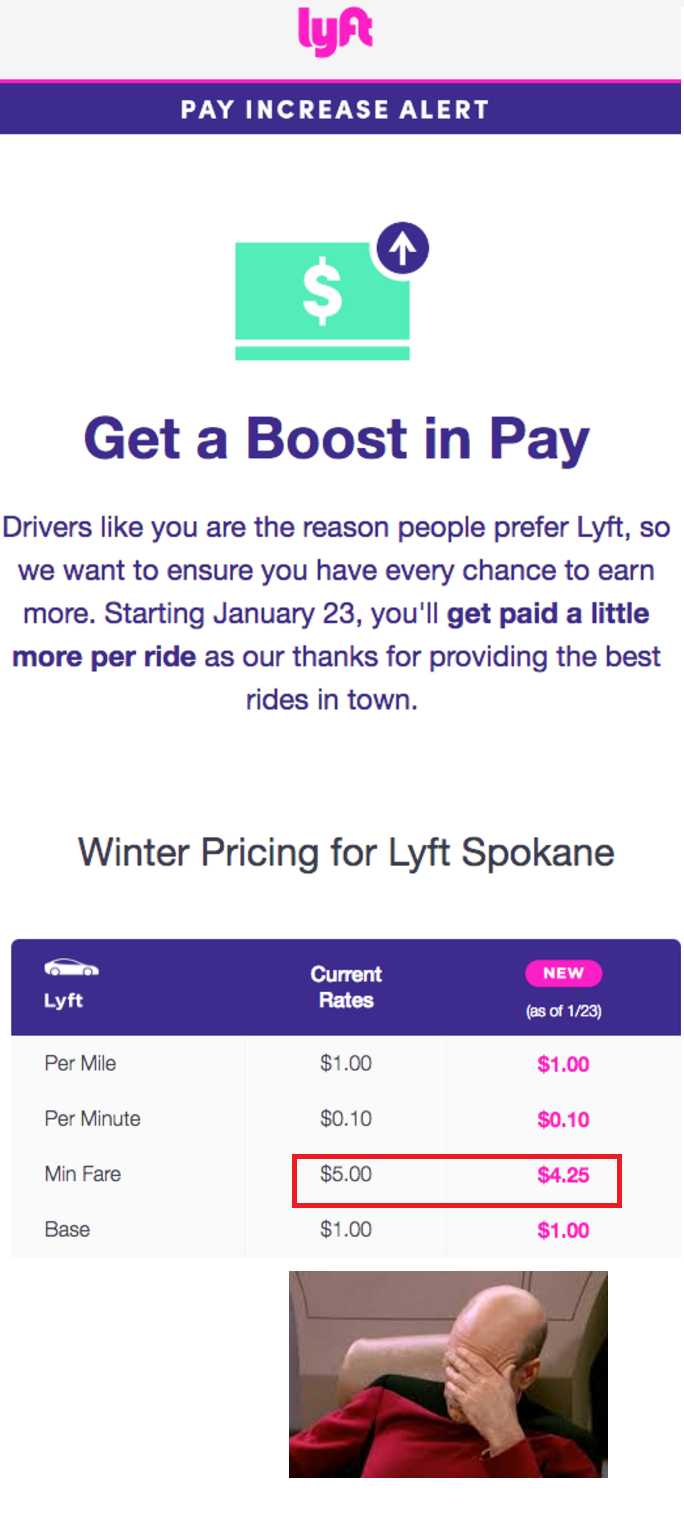
So drivers, what do you think about Uber’s new form of price cuts? Have you noticed a decrease in bonus and incentive offers?
-Christian @ RSG
Save
Save
Save
